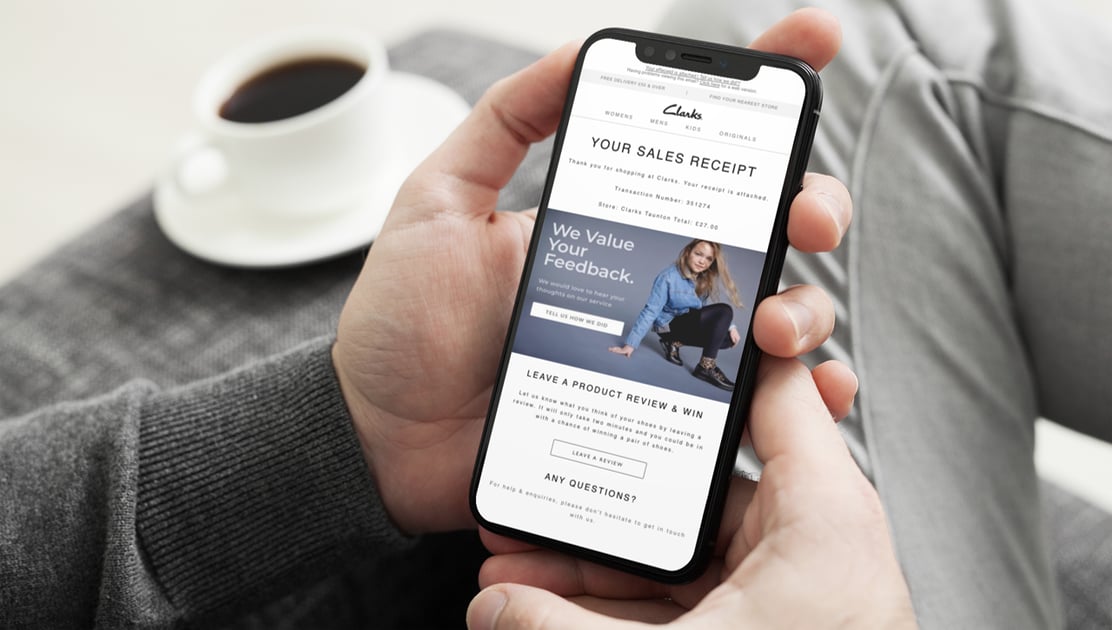On Demand: Harnessing your customer data with yReceipts and more2
July 22, 2020 •Sorcha OBoyle

The swing to online shopping has sped up but that doesn’t mean that physical retail stores are on the way out – far from it. Although customer behaviour is changing, stores are still a valuable opportunity for retailers to engage with and understand their customers’ needs.
To illustrate this, more2 teamed up with yReceipts for an intimate roundtable with retailers with physical stores.
Chris Hannigan, Business Development Manager at yReceipts demonstrated the benefits eReceipts can bring for both the store and the customer by increasing incremental spend and enabling stores to deliver more personalised service. This was followed by Chris Simpson from more2 who illustrated how online and offline data can be used in tandem to drive marketing performance.
You can watch the video here (although technical difficulties cut out the first 30 seconds – the joys of Zoom!)
In a rush?
Read on for the 5 main takeaways.
- Your stores make you different – make them work for you
Omni-channel retailers have to work twice as hard as the pureplay giants: not only do they have to ensure a great instore experience, they also have to deliver a seamless online experience too.
But we shop differently now.
The person in your store is one of your most valuable customers: they’ve put on a mask, braved the crowds and battled through the hand-gel stations to come to you. So it’s up to you to make the experience enjoyable – and ensure you can market to them once they’ve walked out the door.
Hotter Shoes and Bravissimo do this brilliantly: they use customers’ sizing data to recommend new products based on fit and style preference. By capturing this data in-store, both brands develop deeper relationships with their customers and ensure they buy time and time again.
- Always use legitimate interest at the point of capture
Roman is a women’s fashion retailer with over 100 stores and an excellent opt-in rate: 87% of emails captured in-store are opted into their email marketing programme.
For Roman, each email address captured results in an additional £13 incremental spend over 12 months.
It doesn’t take a data scientist to work that one out.
The key with collecting data in-store is to make it a conversational exchange. Train your staff to share the benefits of email receipts with customers at the point of service – a simple ‘It’s easier to exchange or return the item if it doesn’t fit’ helps the customer to understand the perks.
- Physical stores don’t exist in a bubble
Your online and offline stores are sisters; they have to work hand in hand to provide the best experience to your customer who’s likely to shop across multiple channels.
By uploading your retail-first customers to Facebook and Google, you can use geotargeting to serve store ads – something as simple as telling customers what new styles are in their local store shows that you care about them, you’re part of their local high street and you’re ready to welcome them in-store this weekend.
- Track and trace
CEOs and Board members find marketing spend notoriously hard to track. And as marketing is more of a science than an art, you need the right tools in place to measure the effectiveness of your marketing spend.
LifeStyle Sports use in-store data to attribute revenue from their marketing campaigns – with a consistent 40% of revenue across Facebook and Instagram attributed to in-store purchases. So not only does in-store data help you create better campaigns, it’ll also help you link marketing spend with business reality and demonstrate that to the Board and, most importantly, to Finance!
- And on that note… Facebook, Facebook, Facebook
From linking your Facebook campaigns to your product catalogue to uploading in-store customer data to deliver geo-targeted store ads, your Facebook pixel is paramount.
At more2, we provide free social audits for brands and we consistently find that 80% of brands’ pixels are set up incorrectly. It’s a tricky thing to get right but when the pixel is firing, you can set yourself up for success by using the top-performing ad formats, taking advantage of Facebook’s AI and making the most of your audience feeds.
If you set one goal for next week, make sure you get your Facebook pixel checked out!
Fancy a chat about what you’ve read here? Drop us a line at hello@more2.com, we’d love to hear from you!

